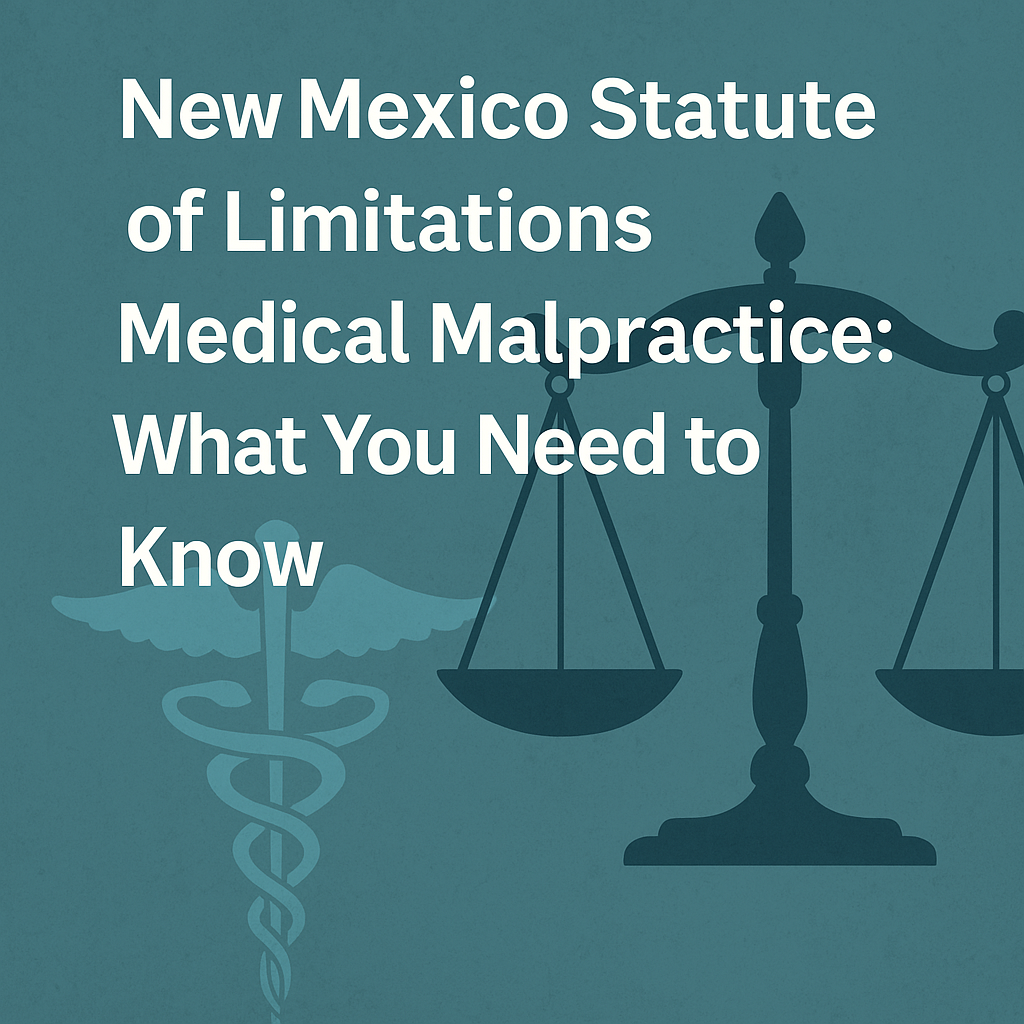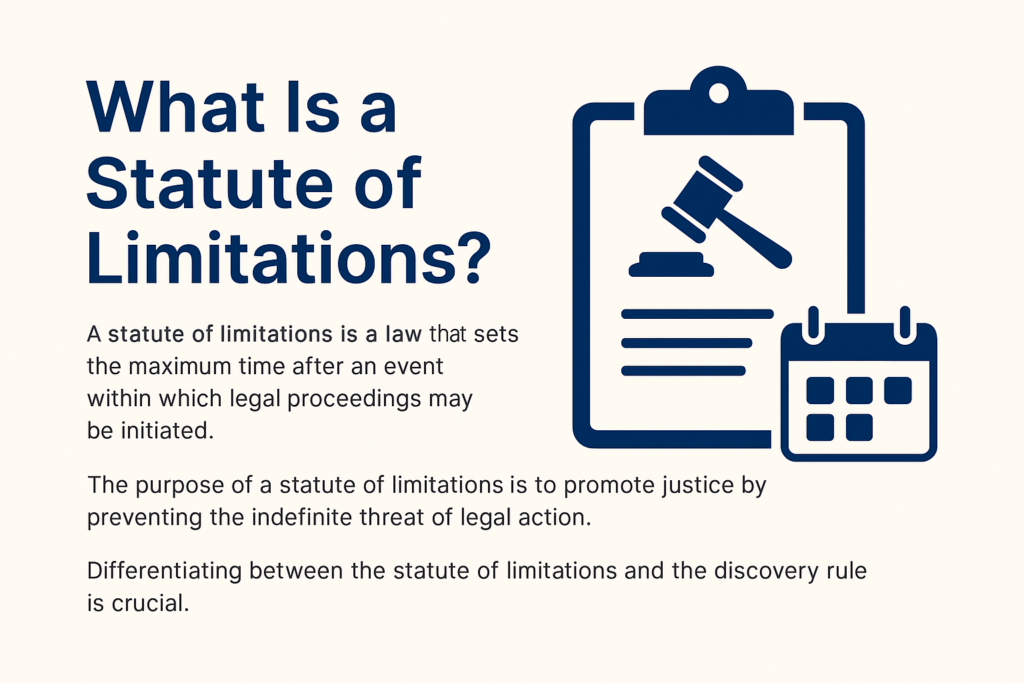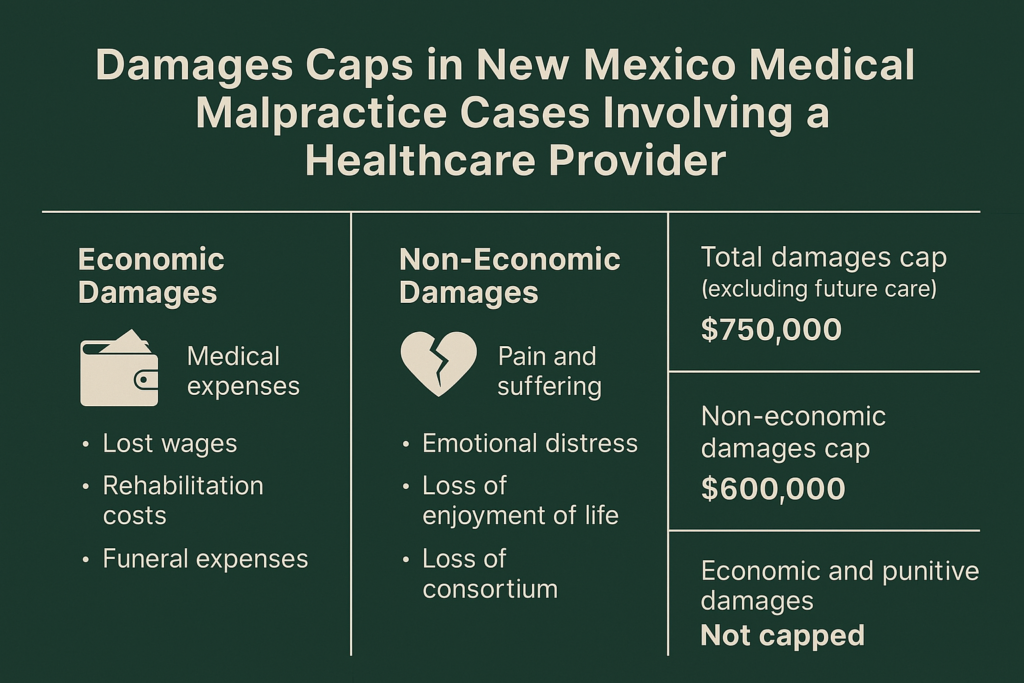
Understanding the statute of limitations for medical malpractice in New Mexico is essential if you believe a health care provider’s negligence has harmed you. Missing this critical deadline can mean losing your right to seek justice altogether.
In this guide, we’ll explain how the statute of limitations works, key exceptions, and how rules like the discovery rule and the Medical Review Commission affect claims made by health care providers.
Key Takeaways
The New Mexico Medical Malpractice Act provides the legal framework for handling medical malpractice claims in the state. Enacted to balance the rights of injured patients with protections for healthcare providers, the Act outlines who can file a claim, the process for pursuing compensation, and the limits on liability and damages.
This law applies to qualified healthcare providers, typically physicians, surgeons, nurses, dentists, hospitals, and clinics registered with the New Mexico Patient Compensation Fund. To gain these protections, providers must meet specific requirements, including individual health care providers carrying a minimum level of professional liability insurance.
The Act is intended to streamline the claims process, reduce frivolous lawsuits, and ensure a fair evaluation of legitimate malpractice claims. If you are considering legal action against a healthcare provider, it’s essential to understand how this Act may apply to your situation—and to consult with an attorney familiar with its requirements.
Understanding Medical Malpractice Lawsuits and Statute of Limitations in New Mexico Medical malpractice is not just a legal term; it’s a deeply personal experience that can have life-altering consequences.
When a healthcare provider’s negligence results in harm, the road to justice can be fraught with challenges. Understanding the legal framework governing medical malpractice claims and the potential for a medical malpractice lawsuit in New Mexico is crucial for anyone affected by such incidents, including those considering medical treatment and medical malpractice suits.
A key part of this framework is the statute of limitations. New Mexico’s timelines for medical malpractice cases are notably stringent, so knowing these deadlines is vital. This guide is designed for patients who have suffered from medical negligence, families seeking justice for a loved one, and legal professionals navigating these complex cases.
Understanding these legal parameters can distinguish between a successful claim and a missed opportunity for justice.

A statute of limitations is a law that sets the maximum time after an event within which legal proceedings may be initiated. This time limit is crucial for legal claims because it ensures that cases are brought to court while evidence remains fresh and witnesses’ memories are reliable.
A statute of limitations promotes justice by preventing the indefinite threat of legal action. It provides a degree of certainty and finality for all parties involved. Without a precise time limit, potential defendants could face lawsuits for incidents that occurred many years ago, making it difficult to mount an effective defense.
Differentiating between the statute of limitations and the discovery rule is crucial.
The statute of limitations sets a strict filing deadline, whereas the discovery rule can extend this period under specific conditions.
The discovery rule allows the limitations period to begin when the injury is discovered rather than when the alleged act of malpractice occurred.
This distinction is especially relevant in medical malpractice cases, where the harm may not be immediately evident.
In New Mexico, the discovery rule is crucial in medical malpractice cases. This rule starts the statute of limitations when the injury is discovered or reasonably should have been discovered, instead of when the alleged negligent act occurred. This provision is vital when medical negligence harm isn’t immediately apparent.
However, the discovery rule has its limitations. If a patient learns of their injury during the three years, they cannot use fraudulent concealment to extend the statute of limitations. This means that the clock starts ticking when the injury is, or should have been, discovered, placing a significant burden on patients to act quickly once they become aware of the harm.
Key Aspects of the Discovery Rule:
Grasping the discovery rule is crucial for anyone contemplating a medical malpractice claim in New Mexico. It emphasizes the need to establish reasonable medical probability when assessing injuries. It highlights the need to be vigilant about one’s health and to seek legal advice promptly when an injury is suspected. This rule ensures that patients have a fair opportunity to pursue justice, even if the harm from medical negligence takes time to become apparent.
New Mexico law provides special considerations for minors and incapacitated persons to ensure they have enough time to file medical malpractice claims.
For Minors:
For children under the age of six, the statute of limitations is tolled until their ninth birthday. Parents or guardians thus have until the child’s ninth birthday to file a claim on their behalf. This provision ensures that young children, who may not be able to advocate for themselves, have their rights protected.
For Incapacitated Persons:
The statute of limitations for incapacitated persons pauses until the individual regains capacity. Once the incapacity is lifted, the individual has one year to file a claim. This rule acknowledges the additional challenges faced by incapacitated individuals and provides them with a fair chance to seek justice once they are able.
These provisions ensure that young children and those who cannot advocate for themselves have their rights protected.
These provisions are crucial for ensuring vulnerable individuals have access to the legal system.
Medical malpractice claims in New Mexico must be screened by the Medical Review Commission before filing a lawsuit. This panel, composed of legal and medical professionals, evaluates the merit of each case. The medical review process is a prerequisite for malpractice claims against qualifying independent providers unless waived by both parties.
Important Details:
Even if the panel issues an unfavorable opinion, the plaintiff may still proceed with a lawsuit. However, the panel’s decision will be admitted as evidence in court.
New Mexico imposes limits on the damages awarded in medical malpractice lawsuits. These caps regulate the compensation amounts.
Compensatory damages are financial awards meant to reimburse the injured party for losses directly caused by medical malpractice. These damages are designed to restore, as much as possible, the victim’s physical, emotional, and financial well-being.
Two Main Categories:
1. Economic Damages
These cover measurable financial losses, including:
2. Non-Economic Damages
These cover more subjective losses that are real but not easily calculated:
New Mexico has a cap of $750,000 on many types of damages in medical malpractice lawsuits against independent providers, including economic and non-economic damages. However, a specific cap for noneconomic damages, such as pain and suffering, is set at $600,000. They aim to limit the financial liability of healthcare providers and ensure fair compensation. The cap on damages excludes compensation for past and future medical care and related benefits in medical malpractice cases in New Mexico.
Economic damages are not capped, covering actual financial losses like medical bills and lost wages. This distinction ensures that plaintiffs can recover the full extent of their financial losses without being limited by the cap. Punitive damages, intended to punish particularly egregious behavior, are also not capped.

Current Caps:
From 2024, the limit on damages for malpractice claims against independent healthcare facilities will rise to $1 million. The cap will be $4.5 million for hospitals, increasing annually until 2026. These changes recognize the evolving landscape of medical malpractice and the need to adjust caps for fair compensation.
These changes reflect a growing need for fair compensation in an evolving healthcare environment.
Filing a medical malpractice claim in New Mexico requires several essential steps:
Proper documentation is vital for recovering compensation. Ensuring all records are complete, timely, and accurate can make or break your case.

Healthcare providers and their insurers often rigorously defend medical malpractice cases, making knowledgeable legal representation crucial.
A medical malpractice attorney can ensure that all necessary evidence is appropriately gathered and presented in court. A skilled lawyer can significantly affect the outcome of a medical malpractice claim, increasing the chances of a favorable settlement or verdict. Additionally, obtaining malpractice liability insurance is essential for healthcare providers to protect themselves against potential claims arising from medical malpractice actions.
An experienced attorney can navigate the complexities of medical malpractice law, improving the likelihood of securing compensation. They provide valuable guidance on legal requirements and help build a strong case. Given the stringent timelines and complex rules governing medical malpractice claims in New Mexico, this expertise is especially important. An experienced medical malpractice lawyer can significantly enhance this process.
A skilled lawyer can make a significant difference in the outcome of your case. They ensure your rights are protected and that you receive fair compensation for the harm suffered. Consulting an experienced medical malpractice attorney is crucial in the claims process, providing the support and expertise needed to navigate this challenging legal landscape.
Contact Tim Chelpaty today for a free consultation. We’ll get you fair compensation for injury caused by Medical Malpractice!
What is the statute of limitations for medical malpractice in New Mexico?
In most cases, you must file a claim three years from the date the malpractice occurred. This time limit is strictly enforced under the New Mexico Medical Malpractice Act.
Does New Mexico use a discovery rule for medical malpractice cases?
Yes, but with limitations. While some claims may be tolled until the injury is discovered, New Mexico generally follows the occurrence rule, meaning the three-year statute starts when the malpractice happened—not when it was discovered.
Can minors file a medical malpractice claim in New Mexico after the three-year limit?
Yes. Children under the age of 6 can file a claim until their 9th birthday. Older minors may file until one year after turning 18.
What happens if the malpractice involves a public hospital or state-employed doctor?
Claims involving public healthcare providers are governed by the New Mexico Tort Claims Act, which imposes a 2-year statute of limitations. However, minors under age seven still have until their 9th birthday to file.
How does the Medical Review Commission affect the statute of limitations?
Before suing qualified healthcare providers, you must file a claim with the New Mexico Medical Review Commission. The statute of limitations is paused during the review and resumes 30 days after the panel’s final decision.
Understanding the New Mexico State law and the statute of limitations for medical malpractice in New Mexico is critical for anyone affected by medical negligence.
Navigating the complex legal landscape of medical malpractice requires a thorough understanding of the relevant laws and regulations.
By consulting an experienced medical malpractice attorney and following the guidelines outlined in this guide, you can ensure that your rights are protected and that you receive fair compensation for the harm you have suffered.
